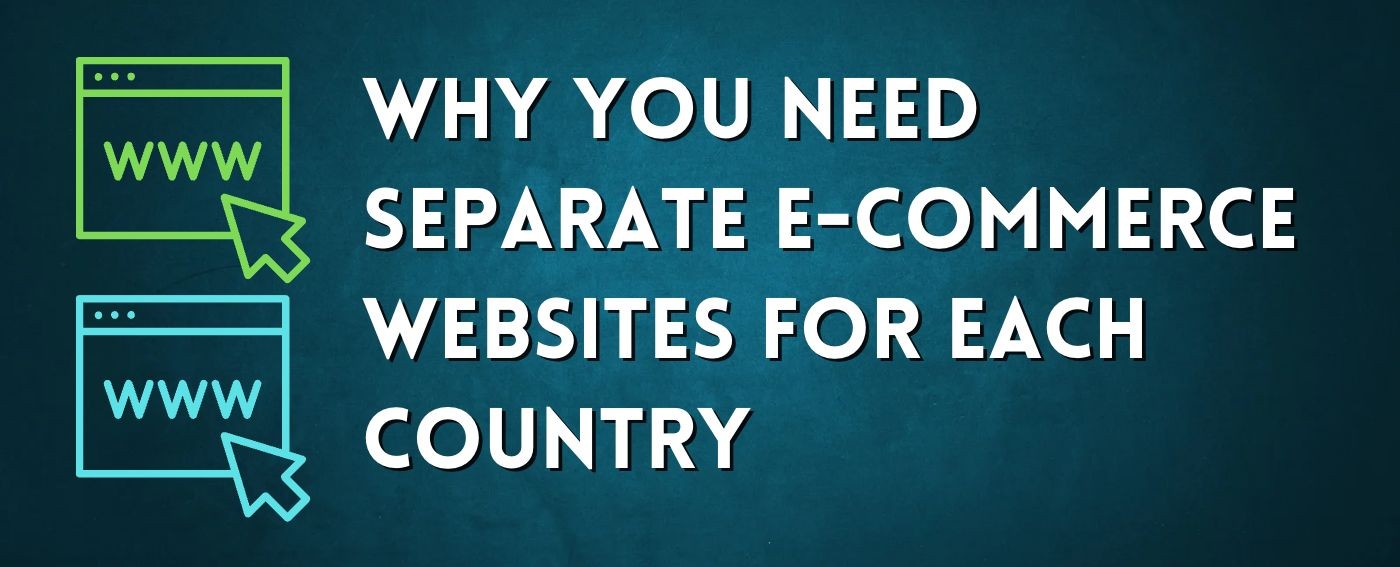Why You Need Separate eCommerce Websites for Each Country: Unpacking the Benefits

Welcome to our latest discussion on optimizing your eCommerce strategy. Today, we explore a topic gaining traction in the international eCommerce community - the creation of separate eCommerce websites for different countries. Is it just a fad or a real game-changer? Read on as we dissect the benefits of this model, from separate customer databases to improved SEO.
1. Tailored User Experience: Separate Products & Inventory
One key benefit of having separate websites is the ability to provide a tailored shopping experience to each of your customer demographics. Products that are popular in one region may not be in another. By separating your inventory and product listings by country, you ensure that you're offering exactly what the local market demands.
Furthermore, it simplifies inventory management. When a country-specific website runs out of a product, it doesn’t affect the inventory levels shown on your other sites. It reduces confusion, provides better stock control, and enhances the overall user experience.
2. Localisation: Separate Customer Databases
Maintaining separate customer databases for each country allows you to collect, store, and analyze customer data more effectively. You can monitor buying patterns, preferences, and behaviours of different demographics, which can guide your marketing and sales strategies.
Localisation also extends to language and cultural nuances, payment methods, and even customer service. It enables you to create personalised, culturally-sensitive communication that builds trust and loyalty with your customers.
3. Cost-Effective Operations: Separate Shipping Charges
Shipping logistics and costs can vary significantly from one country to another. By segregating your websites, you can set country-specific or shipping charges that reflect the true cost of delivery. It’s more transparent, more accurate, and ultimately more cost-effective for both you and your customers.
4. Improved SEO: Country-Specific Content & Keywords
Running separate eCommerce websites allows you to optimize each one for its respective local search engines, thereby improving your search engine optimization (SEO). You can use country-specific keywords, content, and language, which would be much more appealing to the local users and search algorithms alike.
Google and other search engines favor websites that provide relevant and localized content. Having a .uk domain for your UK customers, for instance, is likely to rank higher on Google.co.uk than a generic .com domain.
5. Compliance with Local Laws & Regulations
Different countries have varying regulations for online businesses. These regulations can affect how you handle consumer rights, privacy, data protection, and even digital taxes. Having a separate website for each country makes it easier to comply with these local laws, minimizing your risk of non-compliance penalties.
6. Currency Flexibility
With separate eCommerce websites, you can display prices in the local currency of each market. This helps eliminate the guesswork and potential confusion for customers who would otherwise need to convert the prices themselves. It also allows you to adjust prices as needed to reflect exchange rate fluctuations.
7. Enhanced Competitive Analysis
Operating in different countries means competing with different businesses. Having separate websites allows you to understand the local competition better and adapt your strategy accordingly. You can perform competitor analysis with a more focused approach, leading to a competitive advantage in each market.
8. Better Customer Service
By separating your sites, you can better cater to the customer service needs of each specific region. This might include language-specific customer service, better understanding of local holidays, or quicker response times due to timezone alignment.
9. More Focused Marketing Campaigns
Separate websites allow you to create and implement more focused marketing campaigns. You can take advantage of country-specific holidays, events, or trends, creating marketing content that resonates with the local audience. This can lead to higher conversion rates and increased brand loyalty.
10. Independence and Flexibility
Finally, separate eCommerce websites for each country give you more independence and flexibility. If one website needs to undergo maintenance or changes, it won’t affect your operations in other countries. Similarly, if you decide to test new features or layouts, you can roll them out in one market first without disturbing your entire global customer base.
While this approach may involve more time and resources upfront, the benefits can significantly outweigh the initial investment, leading to improved overall business performance and customer satisfaction.
In Conclusion
In an increasingly interconnected digital world, carving out a unique space for your brand in each market you enter is crucial. The concept of having separate eCommerce websites for each country may initially seem like a task, but the benefits we've highlighted throughout this blog post – from personalised shopping experiences, effective inventory management, country-specific shipping charges, improved SEO, legal compliance, currency flexibility, to targeted marketing – underline its potential value.
It's a strategic investment that promises higher customer satisfaction, enhanced brand reputation, improved competitive standing, and most importantly, a stronger bottom line. Of course, it requires careful planning, execution, and management, but the payoff can be significant.
Global expansion in eCommerce is no longer just about being present in different countries. It's about making each market feel valued, understood, and catered to in a way that resonates with the local audience. And for that, separate eCommerce websites for each country might just be the game-changing strategy you need.



